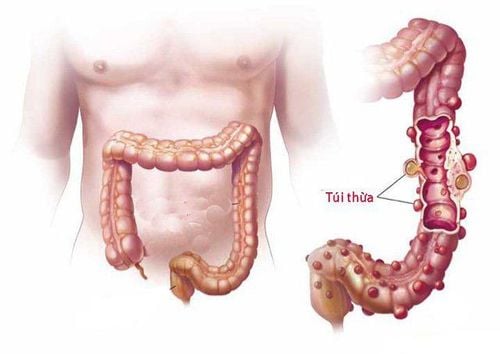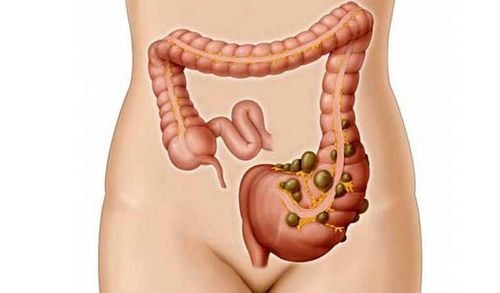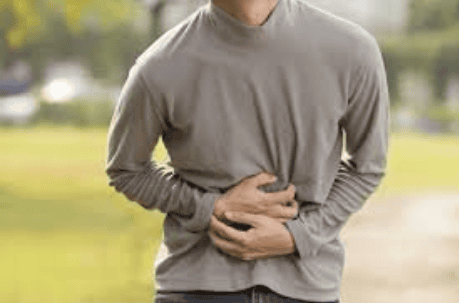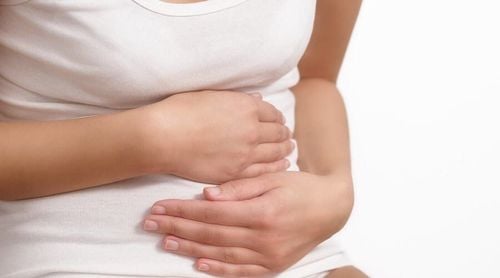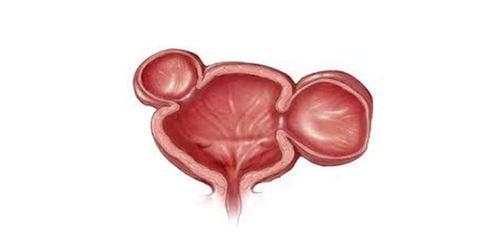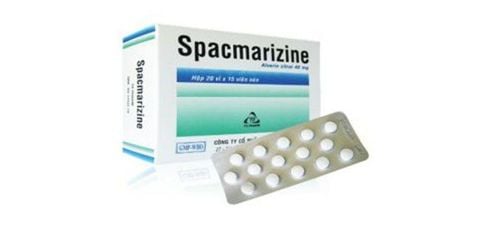This is an automatically translated article.
The article is professionally consulted by Master, Doctor Vu Van Quan - Department of General Surgery & Anesthesia, Vinmec Hai Phong International General Hospital.Colonic diverticulitis if not diagnosed and treated early can leave many serious complications, in which diverticulitis is the most common complication. Treatment of a complicated colonic diverticulum may require a combination of medical therapy and surgical removal of the colonic diverticulum.
1. What is colonic diverticulum?
Diverticulitis is a condition in which bulges form on the wall of the colon. The disease is very common in the elderly, affecting about 5/100 people over 40 years old, and increasing to 60/100 people over 80 years old. Most patients have few symptoms.The cause of colonic diverticulosis is due to not providing enough fiber for the body for many years, weakening the intestinal wall, and at the same time there is great pressure on the intestinal wall, causing the intestinal wall to bulge out to form an extra bag.
2. Complications of colonic diverticulosis
Complications of diverticular disease include:2.1. Diverticulitis When inflamed, the colonic diverticulum expands like a balloon, the wall becoming thinner compared to the rest of the colon. The colon is home to many beneficial bacteria. However, these bacteria can penetrate the thin wall of the diverticulum and cause an infection, a condition called diverticulitis. Mild diverticulitis causes only mild pain in the left iliac fossa. If the inflammation is severe, it will cause a lot of pain and fever. Diverticulitis needs to be treated. You will need antibiotics and fasting, sometimes even drinking, to give the colon a rest. In severe cases, the patient needs to be hospitalized.
2.2. Peritonitis Diverticulitis can cause necrosis of the diverticulum, causing the digestive contents of the colon to spill into the abdominal cavity, leading to peritonitis. Peritonitis is a surgical emergency that requires immediate surgery to clear the abdominal cavity. Part of the colon that has ruptured may need to be removed. If peritonitis is not treated in time, the patient can die.
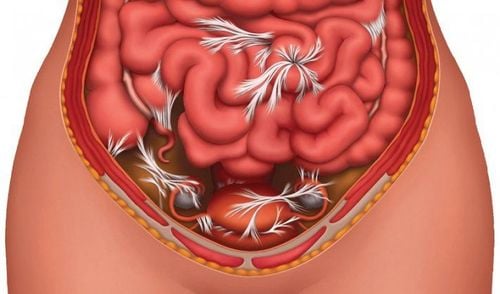
Viêm túi thừa có thể gây hoại tử túi thừa, các chất tiêu hóa ở đại tràng tràn vào khoang bụng, dẫn đến viêm phúc mạc
If the abscess is small, it can be successfully treated with antibiotics. If it's large or doesn't respond to treatment, doctors will need to surgically drain the pus and may even need to remove some of the damaged bowel tissue.
2.4. Intestinal obstruction Infection can lead to scarring of the colon, and scar tissue can cause partial or complete obstruction of the bowel lumen. A partial blockage does not require emergency surgery. However, surgery is needed with complete obstruction.
2.5. Diverticulitis Hemorrhagic complications of colonic diverticulum occur due to the rupture of a blood vessel in the colonic diverticulum. Patients present with black or red bloody stools.
Diverticular bleeding is not common, occurring in only about 17% of people with chronic diverticulitis. The condition is usually painless and the bleeding usually stops on its own. But in rare cases, the bleeding can be severe enough to require a blood transfusion or surgery. If you experience bleeding, contact your doctor immediately.
2.6. Fistula A fistula is an abnormal passageway between two organs. In diverticulitis, a fistula can form and often connects the colon to the bladder, small intestine, or vagina.
Symptoms such as: air or stool in the urine, pain when urinating or abnormal vaginal discharge.
After a sudden episode of diverticulitis, about 14% of patients are at risk of developing a fistula. When a fistula is found, surgery is often required to treat the condition and to avoid further complications.
3. Treatment of colonic diverticulitis with complications
Most patients with diverticulosis have minimal or no symptoms and do not require specific treatment. A high-fiber diet and fiber supplements are recommended to prevent constipation and the formation of multiple diverticula.When symptoms of diverticulitis - abdominal pain, fever... if mild, oral antibiotics are usually sufficient. When pain is worse, a liquid diet to allow the colon and intestines to recover may also be indicated. When the pain gets worse, or when you have a high fever or you can't drink fluids, you may need to stay in the hospital, with intravenous antibiotics, and not eat or drink for several days.
3.1 Surgical intervention when diverticulitis unresponsive to medical treatment requires surgery. Surgery usually involves draining the pus and removing the segment of the colon that contains the diverticulum. Peritonitis due to diverticulitis perforated diverticulum Resection of bleeding diverticulum is necessary for patients with prolonged bleeding, recurrent bleeding, ... Diverticulitis with complications of bladder fistula, vaginal fistula, .... Obstruction intestine . 3.2 Possible risks of diverticulectomy Some common complications include: Undesirable reactions to anesthesia, Bleeding; Herniation; Formation of blood clots; Surgical site infection; urinary retention; Pneumonia ...
With this surgery alone, there may also be specific complications such as:
Injury to other organs in the abdomen: duodenum, ureters, ... Peritonitis due to anastomosis. Residual Abscess Intra-abdominal Abs allergies, ... Before surgery, you will meet with an anesthesiologist to work together to choose the method of anesthesia that is right for you. You will be given specific pre-operative instructions regarding your pre- and post-operative diet. It is very important to follow the instructions for fasting before surgery. In most cases, you should fast for about 6 hours before surgery. You can have a drink like coffee a few hours before surgery.
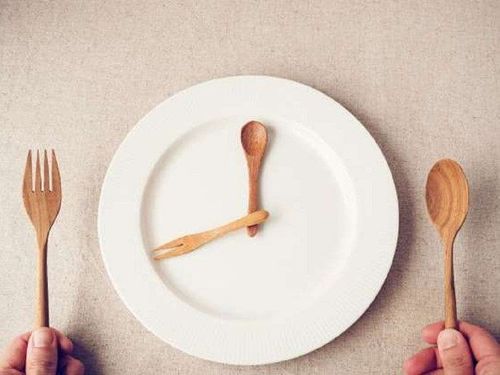
Trong đa số các trường hợp, bạn nên nhịn ăn khoảng 6 giờ trước phẫu thuật
No vision restriction like traditional, optimal quality images with higher accuracy. Less pain after surgery. Colon function recovers quickly. Small surgical scar. Minimize the risk of wound infection. Guaranteed aesthetics. Fast postoperative recovery, short hospital stay. Quickly return to normal activities. The level of anesthesia, anesthesia and postoperative analgesia is very good, leading in the application of methods of anesthesia - anesthesia in the world. After surgery, the patient will have little pain, be fed and guided to exercise early.
The sick person can return home after about 5 days. It may take a little longer to fully recover.
If your stools become looser before surgery and you have to go to the bathroom more, this is normal, you should not worry and it should improve with time.
Regular exercise and movement will help you improve your health.
4. Prophylaxis of colonic diverticulitis:
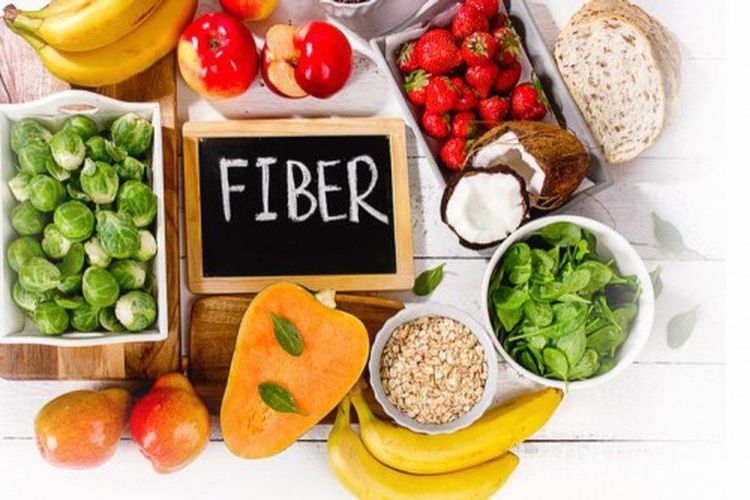
Khẩu phần giàu chất xơ rất quan trọng vì có thể làm cho phân mềm hơn, giúp giảm áp lực trong lòng ruột





